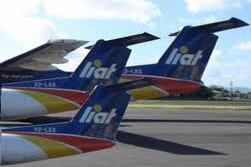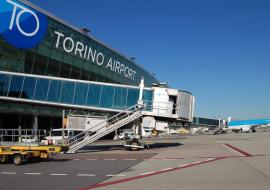LIAT-CTO Could Help Regional Aviation

This year could prove to be a most interesting year as regards regional aviation. A few weeks ago LIAT unveiled to the regional press, an impressive business plan that is expected to move the airline from a loss position to one of profitability in the short space of one year.
And, as if on a cue two weeks later, the Caribbean Tourism Organization’s (CTO) newly formed Aviation Task Force held its first meeting in Bridgetown under the joint chairmanship of former CTO head Ricky Skerritt of St Kitts and current CTO boss Beverly Nicholson-Doty of the US Virgin Islands.
And although the Individual approaches of the two players might be different, the objective seems to be the same — lowering the cost of intra-regional travel; improving the ease of passenger movement and strategies to improve the efficiency of Caribbean aviation.
The actions of LIAT and the CTO show that both entities have recognized that the continued decline in passenger traffic — 23 per cent since 2008 — was having a serious, negative impact on the economies of many of the island states, as well as LIAT’s bottom line.
So while the Task Force is concerning itself with the issues of improved communication among the various regional carriers; the advantages of “open skies” agreements; high government taxes and fees; high and rising fuel costs; visa and other entry restrictions; minimum revenue guarantees; passenger security/screening arrangements; airlift capacity and the dependency of local hotels on the intra-regional market, LIAT’s new business plan, in its own way pretty much addresses the same issues, many of which impact tremendously on its profitability.
However, these things having been pointed out, there is need for greater clarity on some of the issues.
For instance to whom do the recommendations of the Task Force go for implementation? And while there are plans for meetings with airline and airport operators and the various ministers of transport during the first quarter of 2013, does the buck stop there?
In the case of LIAT, its Business Plans calls for a re-fleeting program and while the Plan reveals that “for capital costs of fleet renewal, the company is targeting a 20 per cent equity contribution – 15 per cent from its three major shareholders and the remaining five per cent from other regional governments which have expressed an interest in investing in LIAT.”
First phase of the fleet renewal program, calls for the purchase of seven ATR-42-600 aircraft, which would cost somewhere in the vicinity of (US)$120 million, but according to the new plan shareholder contributions for the fleet renewal, inclusive of transition, training and spares and investments cost will amount to just over (US)$29.1 million (EC)$78.6 million.
But the region is yet to hear from the governments of Barbados and Antigua and Barbuda that they are committed to put more money into LIAT. St Vincent and the Grenadines have already committed close to (US) $4 million as part down payment on the first of seven new aircraft the airline plans to purchase.
Dominica has earmarked (EC)$8 million for some equity in the airline, while St Lucia’s Prime Minister, Dr. Kenny Anthony, at last report was still contemplating whether or not his country would move in that direction. There has also been word that the Denzil Douglas administration of the Federation of St Kitts/Nevis is also expected to come on board, but nothing definitive has been announced.
This is the beginning of the year and if everything is in place soon the first aircraft could be expected towards the end of the second quarter or early in the third quarter. In the meantime the escalating maintenance costs of keeping the decades-old Dash-8s in the air would continue to be a serious challenge for LIAT, bearing in mind that the new Business Plan states that if new aircraft are deployed, maintenance and other costs would immediately be reduced.
Where the CTO and LIAT might clash is the termination or reduction of what LIAT has termed “social services” to the smaller markets which continue to contaminate the airline’s load factor. One of the key factors in the CTO’s market approach is to ensure that the local hotels on the smaller islands, which depend mostly on airlift from LIAT is at least maintained, if not expanded.
Termination or reduction of such “social” services could seriously affect these hospitality institutions and by extension the economy of those markets. It is an issue that both LIAT and the CTO would have to consider.
Source: Trinidad & Tobago Newsday













